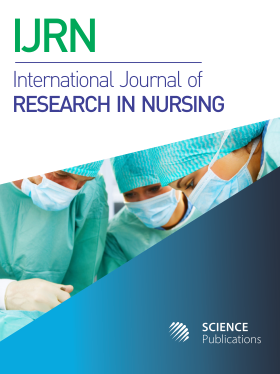Intervened 2-Tier Poisson Distribution for Understanding Hospital Site Infectivity
- 1 Texas State University, United States
Abstract
Problem statement: Whether it is a surgical site or medical treatment at a hospital site, the nurses in particular and the entire medical team including surgeons/physicians in general undergo a risk of being infected ironically by the patients whom they intend to disinfect. There are 2-tiers of patients at the site. One type consists of patients who are internally and well pre-disinfected, not to be sourced for infecting the medical team. The second type consists of patients who are influx to the hospital site and are not well pre-disinfected enough. It is the second type which is a source of hospital site infection for the medical team in general and for the nurses in particular. In other words, the nurses who have to deal with the second type of patients get more exposed to the virus from the patients themselves. This is named the nurses’ exposure exposure rate. Independently, there is an inactivity rate in general for anyone. To reduce such an infectivity, the hospital management makes an intervention with preventive efforts to reduce the infection rate and the impact of such preventive intervention efforts is captured by a parameter in our model. Using a maximum likelihood estimate of the intervention parameter with the data information, we assess the significance of the intervention efforts. Approach: For this concept to work, there is a need to develop an appropriate model as none exists in the literature to be suitable. The model is an abstraction of the reality in the hospital set up. Such a needed, new probability count model is introduced. It is named an Intervened 2-Tier Poisson (I2TP) distribution in this article. Several statistical properties of the I2TP distribution are derived and illustrated to explain the inactivity rate, θ>0 during the treatments of contagious patients in a hospital. Not all nurses are exposed to the virus, while 0 (π≤1 is their exposure rate towards infection. The physicians/surgeons, nurses and staffs undergo a risk of being infected during their treatment of infection or surgery on patients in spite of precautions to avoid infection. The hospital management intervenes with several precautions to minimize, if not eliminate the health care personnel’s risk of being infected. In this article, a statistical methodology is developed to estimate and test the significance of the management’s intervention effect, ρ≥0. Results: The methodology is illustrated using the number of exposed and infected nurses during their healthcare of SARS patients in a Toronto hospital as reported in http://wwwnc.cdc.gov/. There were 32 nurses in the Toronto hospital working with the Severe Acute Respiratory Syndrome (SARS) patients. The sixteen activities of the nurses included in our analysis are administration of medication, intubation, bathing, manipulation of bipap mask, radiology procedures among others. In all these activities, the nurses are well trained to use disinfected gloves, nasal masks. As part of the preventive measures to avoid infection from the SARS patients. The exposure rates for the nurses in these activities to SARS patients varied from 0.13 to 0,81. The infectivity ranged from 1.26 to 8 in these activities. The impact of the intervention efforts ranged from 0.25 to 206.3 in all these sixteen activities. The impact of the intervention efforts was insignificant in the activities: endotracheal aspirate, integration of a peripheral,, intravenous catheter Intubation, manipulation of bipap mask, Manipulation of bipap mask, manipulation of commodes or bedpans, Nebulizer treatment and Suctioning before intubation. The impact of the intervention was significant in the activities: administration of medication, assessment of patient, bathing or patient transfer, manipulation of oxygen mask, mouth or dental care, performing an electrocardiogram, radiology procedures, suctioning after intubation and venipuncture. Conclusion/Recommendations: It is interesting to notice that the preventive intervention efforts by the hospital management for the nurses to be disinfected from the SARS patients worked in some activities but not in others. This distinction could be made because of the intervened 2-tier Poisson distribution which is introduced in this article. Clues for successful intervention in some but not in other activities perhaps hid in covariates. Currently, the author is not able to access such data on covariates. The future research work would proceed in this direction using regression concepts.
DOI: https://doi.org/10.3844/ijrnsp.2012.8.14

- 5,561 Views
- 3,515 Downloads
- 1 Citations
Download
Keywords
- Count model
- likelihood ratio test
- p-value
- hypothesis testing
- exposure rate
- physicians/surgeons
- management intervenes
- statistical properties
- infectivity rate
